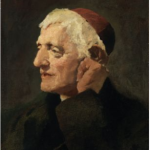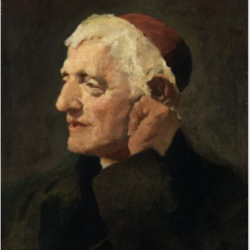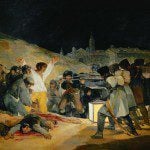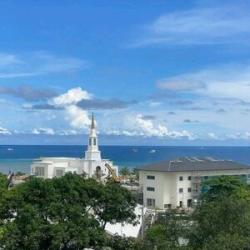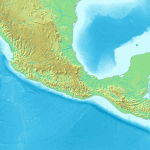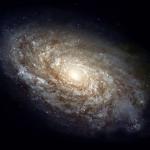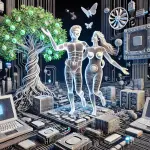
A new article has appeared in Interpreter: A Journal of Latter-day Saint Faith and Scholarship: “Why was the Liahona a Sphere? A New Perspective on Its Form and Function,” written by Wanless Southwick and Kyle Kinghorn
Abstract: A new, simpler design for the Liahona is proposed, which, if correct, makes the reason for two spindles and a hollow-ball shape perfectly obvious. Previous proposed models of the Liahona usually show horizontal, compass-like pointers inside an open-top ball, but our model has vertical spindles protected inside a hollow ball with viewing ports to allow the aligned spindles to be superimposed on a view of the horizon, precisely marking the direction of travel. Lehi’s first use of the Liahona is discussed. Book of Mormon descriptions of the Liahona and how it was used are compared with modern attempts to visualize its design and function. A greater understanding of the Liahona’s two spindles and its surface text may yet be discovered from experimentation with physical models.
And, to accompany the article by Southwick and Kinghorn, Kyler Rasmussen has provided the following on the website of the Interpreter Foundation: “Interpreting Interpreter: Spheres and Spindles”
This post is a summary of the article “Why was the Liahona a Sphere? A New Perspective on Its Form and Function” by J. Wanless Southwick and Kyle Kinghorn in Volume 66 of Interpreter: A Journal of Latter-day Saint Faith and Scholarship. All of the Interpreting Interpreter articles may be seen at https://interpreterfoundation.org/category/summaries/. An introduction to the Interpreting Interpreterseries is available at https:/interpreterfoundation.org/interpreting-interpreter-on-abstracting-thought/.
A video introduction to this Interpreter article is now available on all of our social media channels, including on YouTube at https://youtube.com/shorts/BvKM62FKygo.
The Takeaway: Southwick and Kinghorn propose a functional design for the Liahona that shows how two vertical spindles set within a sphere, operated via faith, might lead its users in specific directions.
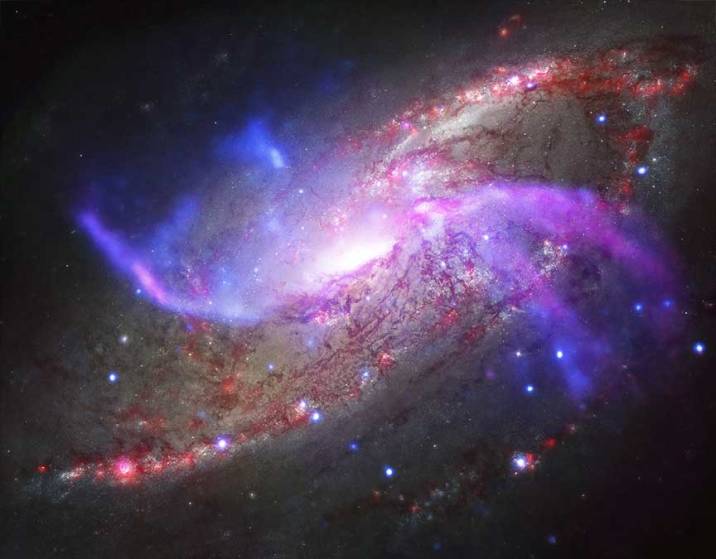
(Chandra X-Ray Observatory/Caltech/NASA public domain)
a large percentage of young scientists consider themselves believers in God or a higher spiritual reality (13).
Beyond physics and cosmology, new developments in the evidence for transcendent causation and intelligence are occurring in the areas of medicine, neuroscience, and philosophy of mind. The peer-reviewed research in near-death experiences and terminal lucidity has become so prolific that the New York Academy of Sciences recently issued a consensus statement among physicians and scientists that states, “Evidence suggests that neither physiological nor cognitive processes end with death.” Based on peer-reviewed medical studies of near-death experiences, terminal lucidity, and cognition in hydrocephalic patients, combined with linguistic-genetic studies of the origin of syntactically significant language by Noam Chomsky and Robert Berwick, 3 as well as studies of self-consciousness and interior experience by David Chalmers and Thomas Nagel, the reality of a transphysical dimension of human consciousness and intellection capable of surviving bodily death (like a soul) becomes not only admissible but also compellingly probable. This transphysical dimension of consciousness seems to be the explanation for why human language and thought are categorically different from ape language. (14)
Though some have contended that scientific evidence overwhelmingly favors materialism—that is, rejection of God, religion, or a spiritual dimension of humans (e.g., a soul)—it is interesting to note a survey conducted by the Pew Research Center found that 51 percent of scientists profess belief in God or a spiritual reality, while 41 percent are agnostics or atheists. 6 Interestingly, younger scientists profess belief in God or a higher spiritual reality more than older ones. According to the same survey, 66 percent of young scientists profess belief in God or a higher spiritual reality, while only 32 percent are agnostic or atheist—two-thirds are believers, while only one-third are not. (15)
The statistics concerning faith of physicians are more striking. According to the 2014 survey reported in the Journal of Religion and Health, 76 percent of physicians are believers in God or a higher spiritual power, while 12.4 percent are agnostic and 11.6 percent are atheist—three-quarters are believers and one-fourth are not. 8 Furthermore, 74 percent of physicians believe that miracles have occurred in the past, and 73 percent believe they occur in the present. (15)
It is also worth noting that most of the originators of modern physics were religious believers, including Galileo Galilei (the father of observational astronomy and initial laws of dynamics and gravity), Sir Isaac Newton (father of calculus, classical mechanics, and quantitative optics), James Clerk Maxwell (father of the classical theory of electromagnetic radiation), Max Planck (father of quantum theory and co-founder of modern physics), Albert Einstein (father of the theory of relativity and co-founder of modern physics), Kurt Gödel (one of the greatest modern mathematicians and logicians and originator of the incompleteness theorems), Sir Arthur Eddington (father of the nuclear fusion explanation of stellar radiation), Werner Heisenberg (father of the matrix theory of quantum mechanics and the uncertainty principle), and Freeman Dyson (originator of multiple theories in contemporary quantum electrodynamics). There are many other contemporary Nobel Prize-winning physicists, chemists, and biologists who have openly professed belief in God and a transphysical soul. (16

Finally, I close with an item that I’ve extracted from the never-failing Christopher Hitchens Memorial “How Religion Poisons Everything” File™: “‘Eyes to See’: Kenyans Receive the Gift of Sight — Both Physical and Spiritual: From free eye clinics, to dozens of patriarchal blessings, missionaries and members are helping Kenyans to see” And there is also this example of theistic depravity to contemplate: “Donations in Central America Will Benefit More Than 18,000 Students”


